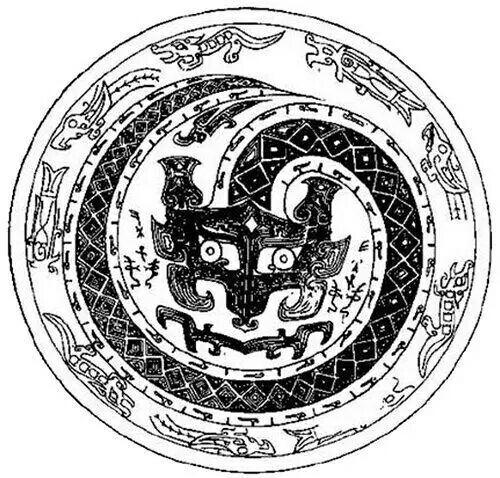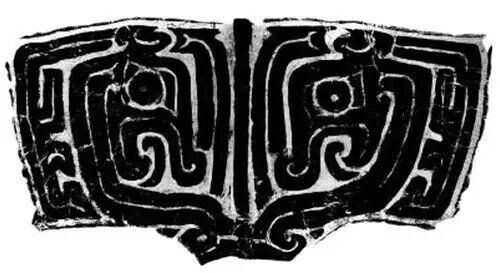Chinese Dragon Design - the Mysterious Symbol on Bronze Wares
After China entered the Bronze Age, bronze culture and art developed rapidly and reached a peak soon, forming a complete range of categories, including bronze vessels, musical Instruments, weapons, chariots and horses, miscellaneous utensils and so on.
Dragon culture is one of the most important parts in traditional Chinese culture. In ancient times, the dragon was regarded as a god and auspiciousness by the ancestors and has long been worshiped by Chinese people. The four major books, Jing, Shi, Zi and Ji, record many legends of the dragon and the worship and awe of the ancient sages to the dragon. Folk myths and stories about dragons have been passed down from generation to generation. Various images of dragons have appeared in rock paintings, ceramics, jade wares, bony wares, bronze wares, silk.
Dragon has become a symbol of the spiritual power of the Chinese nation and a totem of the Chinese nation. The Chinese are known as the descendants of the dragon, and it is no accident that the dragon is one of the 12 animals in the Chinese zodiac, and colorful dragon design are also carved on the bronze wares.
Today, we explore the mysterious symbol on Chinese bronze wares - dragon design, and see what they look like in different periods of Chinese history.
The Historical Inevitability of the Combination of Dragon Design and Chinese Bronze Ware
China’s dragon culture has a long history, and the prototype of the dragon appeared in prehistoric times.
On the stone cliff of Persimmon Beach in Luji County, Shanxi Province, there is a rock painting of fish tail and deer dragon pattern about 10,000 years ago. In the ancient tomb of Yangshao Culture about 6,000 years ago in Xishui Slope, Puyang, Henan, there is a dragon made of clam shells. A pottery plate from the late Longshan Culture more than 4,000 years ago, with a painted flat dragon design on the inner bottom, has been unearthed at the Pottery Temple site in Xiangfen, Shanxi Province. There are alsoo many distinctive carved jade dragons at the sites of Hongshan culture, Liangzhu culture, etc.
Bronze wares were important sacrificial vessels in ancient China. The ancient people used these bronze ritual vessels to pray for good weather and peace. Therefore, bronze ware was a kind of mysterious artifact, with a high and noble status at that time.
Humble Dragon Design on Bronze Wares of Shang Dynasty
Archaeological excavations have proved that bronze ritual vessels appeared in the Xia Dynasty. At that time, the casting technology of bronze ware was low, and the body of the cast ware was thin and rough, usually plain, decorated with simple geometric patterns. It was not able to cast complex patterns like dragon patterns on bronze ware, until the early Shang Dynasty.
Shang people created roughly five types of dragon designs on bronze wares, namely, the reptile dragon, the curly dragon, the corolla dragon, the double dragon, and the two-headed dragon.
The Chinese dragon designs were often engraved on the neck and abdomen of the bronze wares as the main decoration, or used it as an auxiliary decoration to decorate the corner of the wares.
The bronze dragon designs in Shang Dynasty were simple, mysterious and majestic, not only because of the lower technical skill, but more importantly because the consciousness of the ancient Shang people were full of awe for the mysterious power of the dragon.
Curled-up Dragon Design
Centering on its head, the dragon's body coils one or one and a half and form a ring or disc. The dragon head looks directly or sideways. Shang people usually decorated the inner bottom of the bronze water dish with this dragon pattern, and sometimes there were fish, turtle and other aquatic animal patterns beside the dragon body.

Kui Dragon Design
The head of the dragon has no horn and is replaced by a phoenix bird style corolla. The dragon head is turned back, the tail is upright, the corolla is naturally hung down in front of the head, and the body is drawn by a single thick Yang line. Shanghai people engraved this decoration on some large-capacity bronze wine vessel.

Double-dragon Design
A single dragon body has a head at each end, and the body becomes a diagonal or tortuous line. There are two forms of double-dragon designs in Shang Dynasty, one is two dragon heads in the same direction, the other is two dragon heads facing each other.

Dragon Design of Western Zhou Bronzes - the First Great Revolution of Dragon Pattern
In the early Western Zhou Dynasty, the Zhou people basically imitated and followed the achievements of Shang people in the aspects of etiquette, culture and technology, and did not make much self-innovation. The bronze dragon patterns of this period basically continued the style of the late Shang Dynasty. Various dragon designs, such as Kui dragon patterns, rolling dragon patterns, flower crown dragon patterns, and double dragon patterns were also seen on the bronze wares of the Western Zhou Dynasty.By the middle of the Western Zhou Dynasty, the rule of the Zhou people was stable and their social culture had been developed to a higher extent. They were no longer satisfied with just inheriting the social and cultural traditions of Shang. The most significant change of bronze dragon design was that the mysterious and majestic kui dragon pattern suddenly seemed to disappear in this period. Perhaps the Zhou people paid more attention to the symbolic meaning of the power hierarchy of bronzes rather than the "divinity" of communicating the gods of heaven and earth, so they began to pursue the artistic aesthetic of the dragon design on bronzes.

During this period, the Zhou people integrated the former corolla dragon design with the phoenix bird pattern popular in the early Western Zhou Dynasty to form the special dragon design of the dragon body and bird tail.
In the late Western Zhou Dynasty, the Zhou people continued to strengthen their bronze cultural style. At this time, a new type of cross-dragon design was created, which was composed of two or more dragon bodies interlocking together. Cross-dragon design were usually decorated on the surface of utensils in two ways: axial symmetry and central symmetry. The number of dragons is small, but the bodies are thick and long, winding as if they are dancing.

The double dragon design created by Shang people did not change greatly for a long time, until the Zhou people developed a new form, that is, the two dragon heads were on the back of each other, and the dragon crowns were connected or intersected with the body.


In addition, a new dragon design appeared in ancient China. The upper lip was long and rolled up to the back and parallel to the trunk. Two dragons was usually arranged in an axially symmetrical manner on the bronze wares.

Lively and Romantic Bronze Dragon Design of Spring and Autumn and Warring States - the 2rd Great Change
The Spring and Autumn Period and the Warring States period were an era of division, disintegration of rites, and active ideology and culture. The dragon pattern of bronze wares in the early Spring and Autumn period basically continued the style of the late Western Zhou Dynasty, but it also changed slightly. For example, the body of the cross-dragon design was thinner. The monomer of curly dragon was smaller and had a dense distribution trend. The two-head dragons may intertwine. All kinds of signs indicated that the bronze dragon design would have a change.

During this period, the simple corolla dragon pattern was removed from the historical stage, and then Panchi dragon design was seen on bronze wares. It consisted of several small dragons intertwining each other to form a symmetrical distribution. The dragon body could be fat or thin. Some dragons also spit out the tongue, revealing the lively atmosphere of the time.

During the Warring States Period, people strengthened the lively and romantic style of bronze dragon pattern. Usually, a fixed space was rowded with small, curved dragons, whose shapes were simplified and became abstract, and can hardly be recognized as dragon images. Sometimes, people also place small animal head decorations between the dense dragon bodies.
During this period, people invented the method of lost-wax casting, silvering and gold plating, and other bronze casting and decoration techniques. The dragon pattern cast with new technologies and techniques was even more interesting.

Dragon Design on Bronze Wares of Qin and Han Dynasties and Later
In the Qin Dynasty and Han Dynasties, bronze vessels lost their noble status as ritual vessels, and were usually cast into simple and practical daily life utensils. In the later period, their status as daily life utensils was even replaced by pottery, porcelain, wood and lacquer. But the dragon was still a god for Chinese people, and the ruler even strengthened the symbolic meaning of the dragon as a symbol of supreme imperial power.

At this point, the noble dragon was separated from the bronze ware, which had fallen in status. In the Qin and Han dynasties and later periods, people often carved a small number of dragon designs on the bronze mirrors, which were still full of vitality. As time went on, the dragon patterns on the bronze mirrors were usually cast in low relief, and their shapes gradually became uniform, consisting of parts of animal forms such as ox head, antlers, shrimp eyes, long whiskers, snake body, fish scales, eagle claws, etc., which may be caused by the unification of multi-ethnic countries.
The various forms of dragon designs of bronze ware were eventually ousted and replaced by a unified and standardized dragon design, which has continued to this day without any qualitative change.
Further reading: